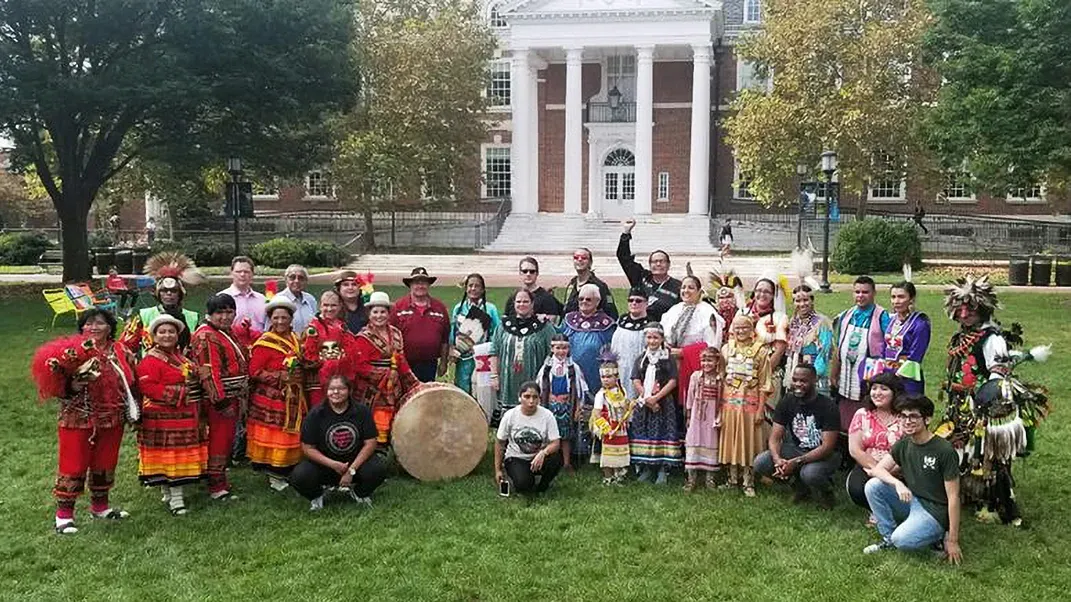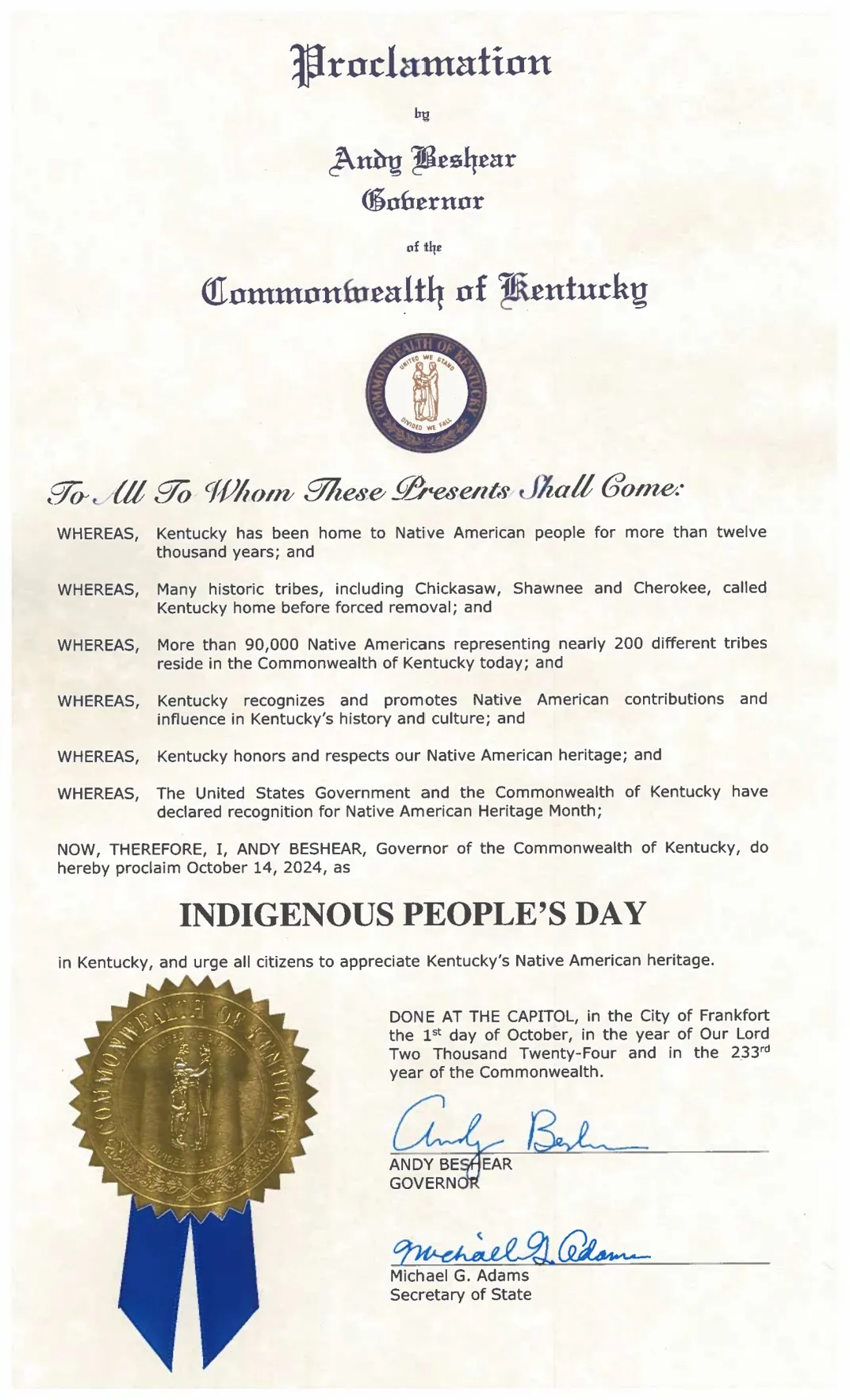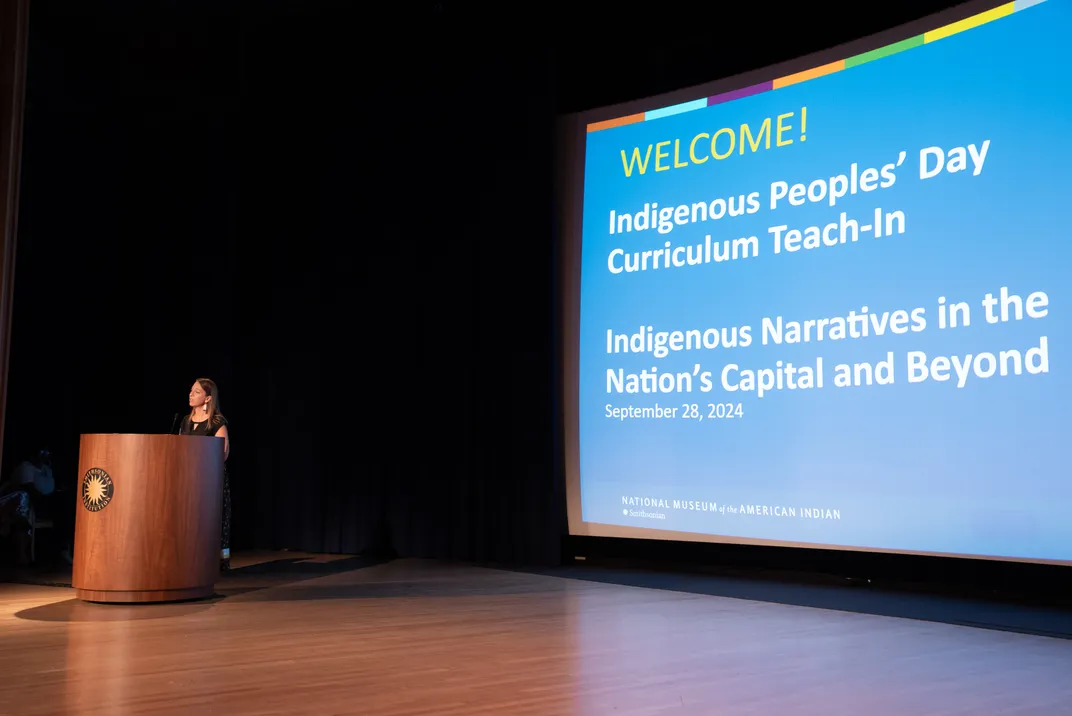NATIONAL MUSEUM OF THE AMERICAN INDIAN
The Long Path Toward Establishing Indigenous People’s Day, a Day to Honor and Recognize the First Peoples of America
Native American Indians are committed to making Indigenous Peoples Day a national holiday in 2024.
:focal(4014x2676:4015x2677)/https://tf-cmsv2-smithsonianmag-media.s3.amazonaws.com/filer_public/21/2e/212e1aa5-6b15-4aa8-833c-1e4337e298ba/ipd_1.jpg)
This Monday, October 14, many Americans will celebrate Indigenous Peoples' Day by recognizing the history and contributions of Native peoples. President Biden’s administration has officially recognized Indigenous Peoples' Day since 2021, but it is not yet a federal holiday. Thus, for the fourth year in a row, the United States will officially observe Indigenous Peoples Day alongside Columbus Day. However, The Indigenous Peoples' Day Act, reintroduced in Congress on October 2, 2023, would potentially designate the second Monday of October as Indigenous Peoples’ Day nationwide. The bill currently has 56 cosponsors in the House of Representatives and 11 cosponsors in the Senate.
Looking back, generations of Native people throughout the Western Hemisphere have protested Columbus Day. In the forefront of their minds is the fact the colonial takeovers of the Americas, starting with Columbus, led to the deaths of millions of Native people and the forced assimilation of survivors. American Indian activists and their allies have long argued that Columbus Day, Columbus statues, and the discovery myth endorse his actions which include enslavement, torture and other atrocities to Native people.

In 1977, participants at the United Nations International Conference on Discrimination against Indigenous Populations in the Americas proposed that Indigenous Peoples’ Day replace Columbus Day as a national holiday. Indigenous Peoples’ Day recognizes that Native people are the first inhabitants of the Americas, including the lands that later became the United States of America. And it urges Americans to rethink history marking a change of course from previous administrations in their proclamations marking Columbus Day, which honors the explorer, Christopher Columbus.
The movement to replace Columbus Day with Indigenous Peoples’ Day or Native American Day has gained momentum and spread to states, cities, and towns across the United States. The first state to rename Columbus Day was South Dakota, in 1990. Hawai’i has also changed the name of its October 12 holiday to Discoverers’ Day, in honor of the Polynesian navigators who peopled the islands. Berkeley, California, became the first city to make the change in 1992, when the city council renamed Columbus Day as Indigenous Peoples’ Day. In 2015 an estimated 6,000 Native people and their supporters gathered at Randall’s Island, New York, to recognize the survival of the Indigenous peoples of the Western Hemisphere. The demonstration’s success and the worldwide media attention it attracted planted the seeds for creating an Indigenous Peoples’ Day in New York City. According to the website RenameColumbusDay.org:
- Approximate cities: 216
- Approximate schools: 83
- Approximate counties: 20
- Approximate states not observing Columbus Day: 29, plus Washington, D.C., have renamed Columbus Day and adopted Indigenous Peoples' Day

Kentucky now has the most cities of any of the states, who have adopted Indigenous People’s Day, thanks to Indigenous Rights Activist Angela Arnette-Garner. Arnette-Garner said, “As a long-time Indigenous rights activist, I have lobbied city, county, and state governments in Kentucky for the passage of Indigenous Peoples Day proclamations (thus far 32 city, county, and state proclamations passed in Kentucky). This, in an effort to help educate people about Indigenous history and culture, encourage truthful dialogue about genocide, expose the shameful legacy of Christopher Columbus, repudiate the doctrine of discovery, and advocate for the decolonization of education. Yet, my ultimate goal in founding the Indigenous Peoples Day movement of Kentucky, is to demonstrate that if widespread support could be garnered in one of the most staunchly conservative states in the country, then establishment of a federal holiday is truly attainable. I fervently hope that Congress takes a serious look at the Indigenous Peoples Day movement of Kentucky.”

Universities and schools across the country are also observing the new commemoration. “Mythology about Columbus and the ‘discovery’ of the Americas continues to be many American children’s first classroom lesson about encountering different cultures, ethnicities, and peoples. Teaching more accurate and complete narratives and differing perspectives is key to our society’s rethinking its history,” stated Renee Gokey (Eastern Shawnee), NMAI Teacher Services Coordinator. In past years, the museum has hosted Indigenous Peoples’ Curriculum Days and teach-ins at the beginning of the school year in Washington DC and New York. Recently a Teach-In for Change was held at the National Museum of the American Indian in the Washington DC to prepare teachers on how to prepare for Indigenous Peoples Day. Links to additional resources are available through these links: National Museum of the American Indian, Native Knowledge 360°, Learning for Justice, and IllumiNative. These resources include curricula, sample lesson plans, books, and videos.
Throughout Indian Country, Indigenous Peoples Day is being observed through prayer vigils, parades, powwows, symposiums, concerts, lectures, rallies, and classrooms, all in an effort to help America rethink American history.
